The ocean’s depths conceal a mesmerizing, yet potentially deadly, creature: the blue-ringed octopus. These small cephalopods, famed for their iridescent blue rings, represent a remarkable intersection of beauty and danger. While captivating to observe, understanding their biology, behavior, and the associated risks is crucial for both ocean enthusiasts and those living near their habitat. This guide explores the multifaceted world of the blue-ringed octopus, covering everything from its natural history to practical safety measures.
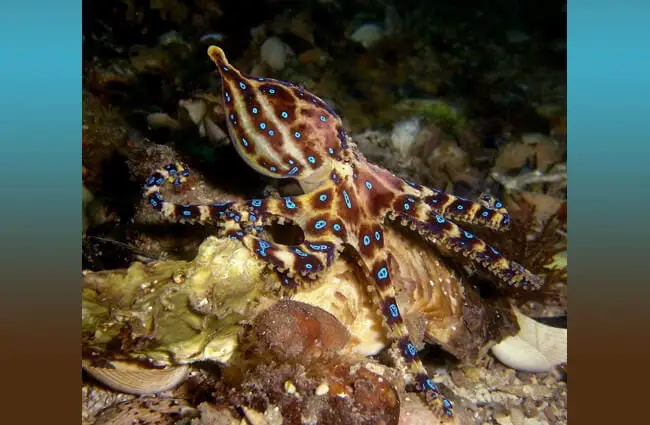
A Jewel of the Reef: Introduction to Blue-Ringed Octopuses
Blue-ringed octopuses belong to the genus Hapalochlaena, encompassing several closely related species. They are relatively small, typically ranging from 12 to 20 centimeters in total length, making them easily overlooked in their coral reef and rocky shore environments. Their coloration is generally a muted yellowish-brown, providing camouflage. However, when disturbed or threatened, vibrant, iridescent blue rings flash across their skin, serving as a warning signal.
Physical Characteristics & Distinctive Features
These octopuses possess a rounded body with a distinct lack of a rigid internal skeleton. Like all octopuses, they have eight arms lined with suckers. These suckers are critical for grasping prey and navigating their surroundings. The blue rings themselves are created by specialized pigment-containing cells called chromatophores, allowing for rapid changes in color and pattern. The intensity of the blue can vary, and the number of rings can differ between species.
Habitat & Distribution: Where Do They Live?
Blue-ringed octopuses are primarily found in the Pacific and Indian Oceans, ranging from Australia and Japan to the Philippines and Indonesia. They prefer shallow coastal waters, often inhabiting coral reefs, rocky outcrops, and tide pools. They seek shelter in crevices and among debris, preferring environments with ample hiding places. The species Hapalochlaena lunulata is commonly found in southern Australia, while others like Hapalochlaena fasciata are more widespread throughout the Indo-Pacific region.
Evolutionary History: Tracing Their Origins
The evolutionary history of blue-ringed octopuses is interwoven with that of all cephalopods, dating back to the Cambrian period over 500 million years ago. The development of complex nervous systems and sophisticated camouflage techniques allowed cephalopods to thrive in marine environments. The specific lineage leading to the Hapalochlaena genus likely diverged from other octopus groups during the Paleogene period. Their unique toxicity evolved as a defense mechanism against predators and a means to subdue prey.
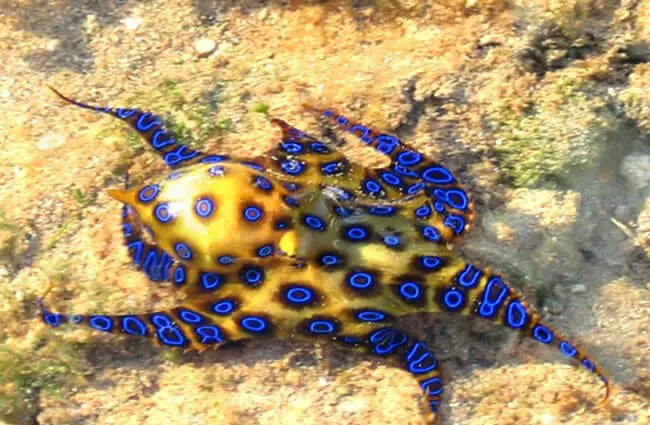
Diet & Hunting Strategies: What Do They Eat?
Blue-ringed octopuses are carnivores, feeding primarily on small crabs, hermit crabs, shrimp, and other crustaceans. They are ambush predators, patiently waiting for prey to come within reach. They employ a unique hunting strategy that involves tetrodotoxin, a potent neurotoxin. The octopus bites its prey, delivering the toxin, which paralyzes the crustacean and allows the octopus to consume it. This neurotoxin also explains the danger this seemingly small octopus poses to humans.
Mating & Reproduction: The Cycle of Life
The mating habits of blue-ringed octopuses are relatively little understood. They are typically solitary creatures, only coming together to reproduce. Males deposit sperm packets onto the female’s mantle, which she then stores. She fertilizes her eggs internally and lays a clutch of around 50 pale yellow eggs, which she diligently guards until they hatch. The eggs take several months to develop, and the female will not eat during this period, dedicating all her energy to protecting her offspring. Once the eggs hatch, the young octopuses are miniature versions of the adults and immediately begin their independent lives.
Ecological Role & Interactions
Blue-ringed octopuses play a vital role in maintaining the balance of their coral reef ecosystems. As predators, they help control populations of crustaceans, preventing any single species from becoming overly dominant. They themselves are preyed upon by larger fish, such as moray eels, and sea snakes. Their presence contributes to the overall biodiversity and health of the reef environment. They exhibit complex behaviors, including problem‑solving and learning, indicating a high level of intelligence.
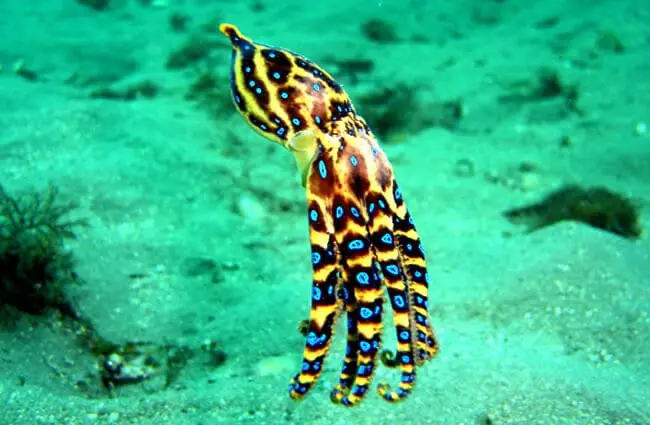
The Deadly Secret: Tetrodotoxin & Venom
The most significant aspect of the blue-ringed octopus is its potent venom, containing the neurotoxin tetrodotoxin. This toxin blocks sodium channels, preventing nerve signals from being transmitted, leading to paralysis and potentially respiratory failure. There is no known antivenom for tetrodotoxin, making a bite extremely dangerous. Symptoms can appear within minutes and include numbness, muscle weakness, and difficulty breathing. Immediate medical attention is crucial. It’s important to note that the octopus does not actively seek to bite unless provoked or threatened.
Encounters with Humans: Safety & First Aid
Although attacks are rare, it is essential to exercise caution when diving, snorkeling, or exploring tide pools in areas inhabited by blue-ringed octopuses. Never attempt to handle or disturb these creatures. If bitten, seek immediate medical attention. First aid involves applying pressure to the bite wound and initiating rescue breathing if the victim is experiencing difficulty breathing. The key is rapid transport to a hospital equipped to provide supportive care, such as mechanical ventilation.
Blue-Ringed Octopuses in Captivity
Maintaining blue-ringed octopuses in captivity requires specialized care and strict safety protocols. They need a secure aquarium with a complex environment providing ample hiding places. Water quality must be meticulously maintained, and a carefully curated diet of live crustaceans is essential. Zookeepers and aquarium staff must wear appropriate protective gear when handling the octopus or cleaning its enclosure. Public viewing should be carefully managed to prevent accidental contact.
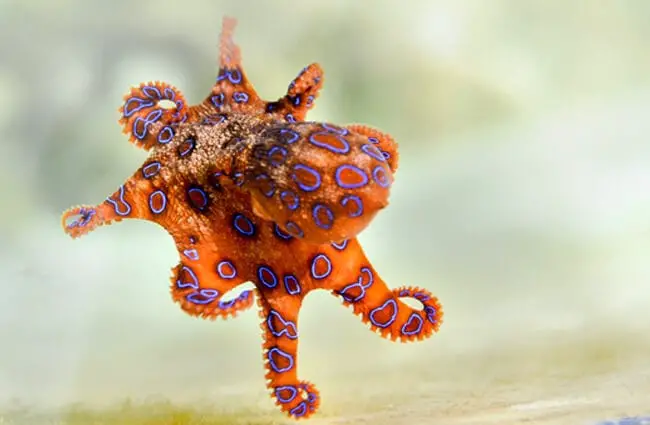
Cultural Significance & Folklore
In some coastal communities of the Indo‑Pacific region, blue-ringed octopuses hold cultural significance, often associated with myths and legends. Their striking appearance and potent venom have inspired both awe and fear. Stories are sometimes told of their ability to control the tides or predict storms. However, accurate scientific understanding has largely replaced these traditional beliefs.
Interesting Facts & Further Exploration
Here are some fascinating details about blue-ringed octopuses:
- They can change the texture and color of their skin in a fraction of a second.
- They are capable of escaping from incredibly small spaces.
- Their lifespan is relatively short, typically around one to two years.
- They have a complex nervous system and exhibit signs of intelligence.
- Different species of blue-ringed octopus vary slightly in size and coloration.

The blue-ringed octopus, a small yet remarkable creature, embodies the wonders and dangers of the marine world. Understanding its biology, behavior, and potential risks is vital for ensuring both its conservation and human safety. Continued research and responsible interaction are essential for appreciating this mesmerizing species for generations to come.


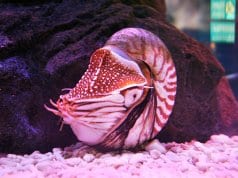
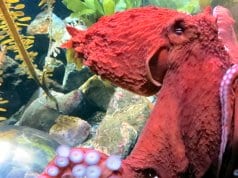
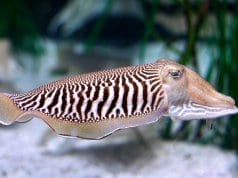

![Red Angus Closeup of a beautiful Red Angus cowPhoto by: U.S. Department of Agriculture [pubic domain]https://creativecommons.org/licenses/by/2.0/](https://animals.net/wp-content/uploads/2020/03/Red-Angus-4-100x75.jpg)

